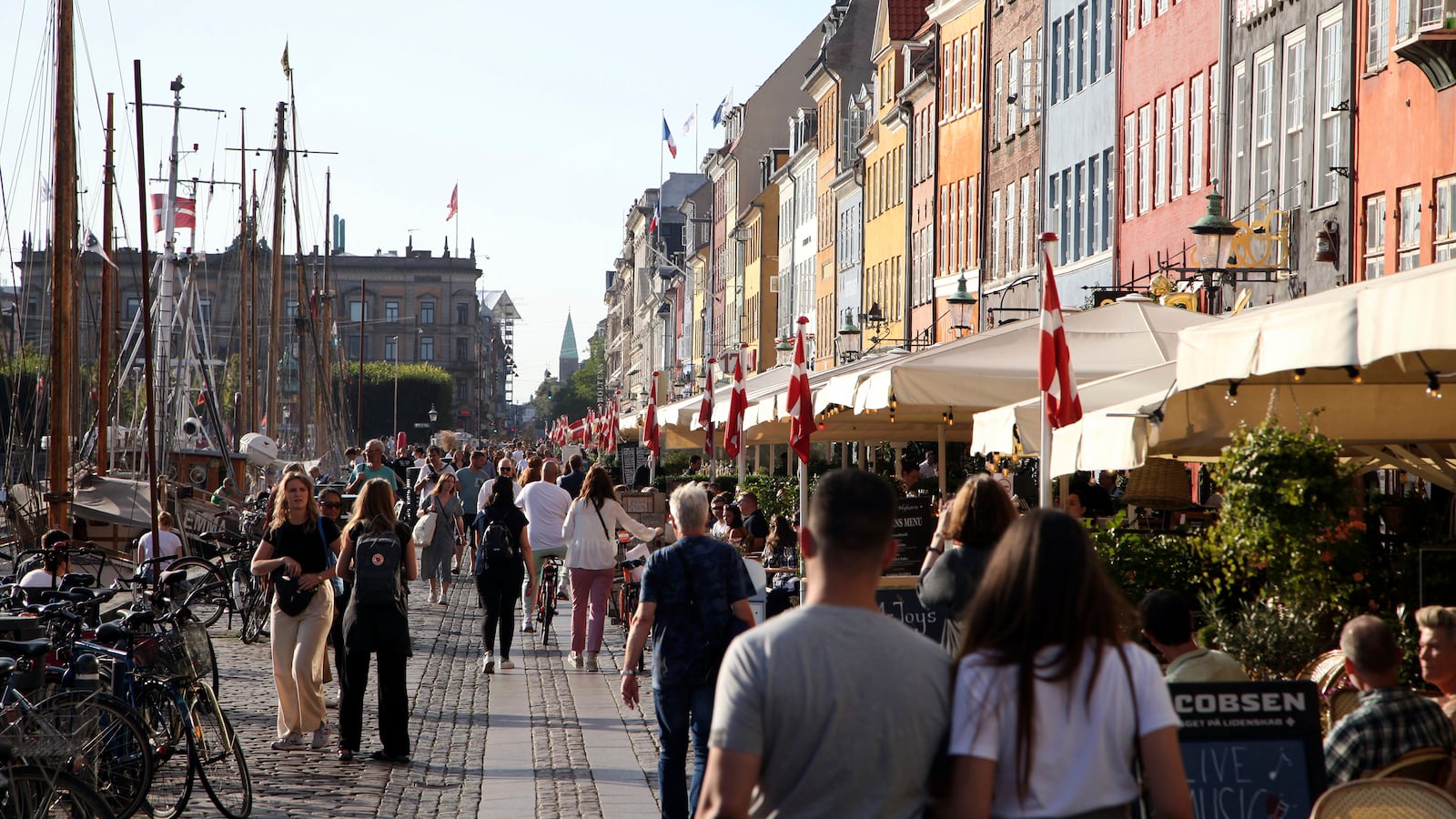VORUPOR, Denmark—A massive storm howls and shakes the walls of our house by the North Sea as a record Omicron surge tears through the Danish population. My husband and I are both immunocompromised, and we left the U.S. for my native country of Denmark two years ago to escape the Trump administration’s disastrous management of the pandemic. Today, despite a major spike in Denmark’s COVID cases and a decision to lift all pandemic restrictions in the country, I have no regrets.
When Danish Prime Minister Mette Frederiksen first announced that all restrictions to stem the tide of this surge would be removed on Feb. 1, my initial reaction was, naturally, fear. After two years of carefully avoiding exposure, it felt as logical to me as walking naked out in the freezing storm. But the truth is, there are key distinctions in Denmark’s handling of the pandemic that have allowed the country to announce an effective end to the pandemic even as new infection rates are peaking.
Danish authorities have declared that their anti-COVID “super-weapon” is the population’s record-high vaccination rates. Over 80 percent of Danes are fully vaccinated, compared to roughly 60 percent of Americans. According to an analysis by The Financial Times, the U.S. would have cut its COVID hospitalization rates this winter by at least half had it achieved the same vaccination and booster rates as Denmark.
These results have been accomplished without enforcing vaccine mandates. The Danish people have been informed, guided, and encouraged along the way, but at no point forced to comply.
In early 2020, while my husband and I were still in California, we had been in denial about the seriousness of COVID-19. We both work in the music industry, and canceling tours involved detrimental financial loss. I had figured that the chatter in the media was part of the usual hunt for high-octane, ratings-driven and polarizing sensationalism.
In press briefings, President Trump and the CDC appeared to be at odds over the narrative. It seemed that the administration’s preferred approach was to deny that the virus required any sort of response beyond closing borders.
Frustrated, I began to watch COVID-19 press briefings that aired in my native Denmark. There, the message was clear: Be worried, but don’t panic; we can and will do what it takes to keep everyone as safe as possible. In these briefings, scientific findings informed politicians, and responses to the pandemic were enacted incrementally, transparently, and with multi-discipline consensus.
Anti-COVID measures were not framed as anti-economy measures. Taking care of the weakest and the elderly was a society-wide responsibility. There was consensus among all 16 political parties to act united in the interest of the common good. A feeling of can-do determination marked this early Danish approach.
Meanwhile, in the U.S., the pandemic devolved into a political battle. In certain areas, those of us wearing masks in public were harassed, berated, or pretend-coughed at, since mask-wearing was seen by some as “liberal scare tactics.” In some states, restaurants and non-essential businesses were shuttered. In others, it became illegal for businesses to require masks or enforce any safety measures at all. The public was left to decipher the contradictory messages they were getting from the government, health agencies, and the media.
In July 2020, as chaos continued to be sowed, nurtured, and reinforced by the Trump administration, we made our decision to leave. With work in the live music industry at a standstill, it was as good a time as any to take the plunge.
Upon landing, we saw the difference immediately. The Danes had implemented a phased re-opening of schools, and by the time we arrived, things felt surprisingly normal. People politely socially distanced, testing was abundant, and tracing the virus was considered key to preventing it from spreading. All businesses, churches, museums, and restaurants were open with safety measures in place.
Since then, Danish society has shut down, reopened, implemented new rounds of restrictions and closures, and now, finally, declared the situation fully under control. As the pandemic has changed, so has the response to it. Political agreement came and went, but through it all, there was an unspoken agreement. When a mask mandate was announced, people wore masks. When it was called off, they took them off.
In the U.S., the concept of freedom has increasingly been interpreted as the right to be self-serving. It’s a fallacy that continues to divide the population and plague the current Biden administration, leading to a stretched healthcare system and a stalled recovery.
Overall, the feeling of common responsibility in Denmark has made me feel safer at a time when much is uncertain. Here, freedom is seen through a lens of empowering individuals through communal accountability. When it comes to addressing global crises, I’ve experienced how one approach can trigger a nationwide state of paralysis, and how the other can create a sense of shared duty that leads to community-wide engagement and trust, which are foundational to any real expression of individual freedom.








